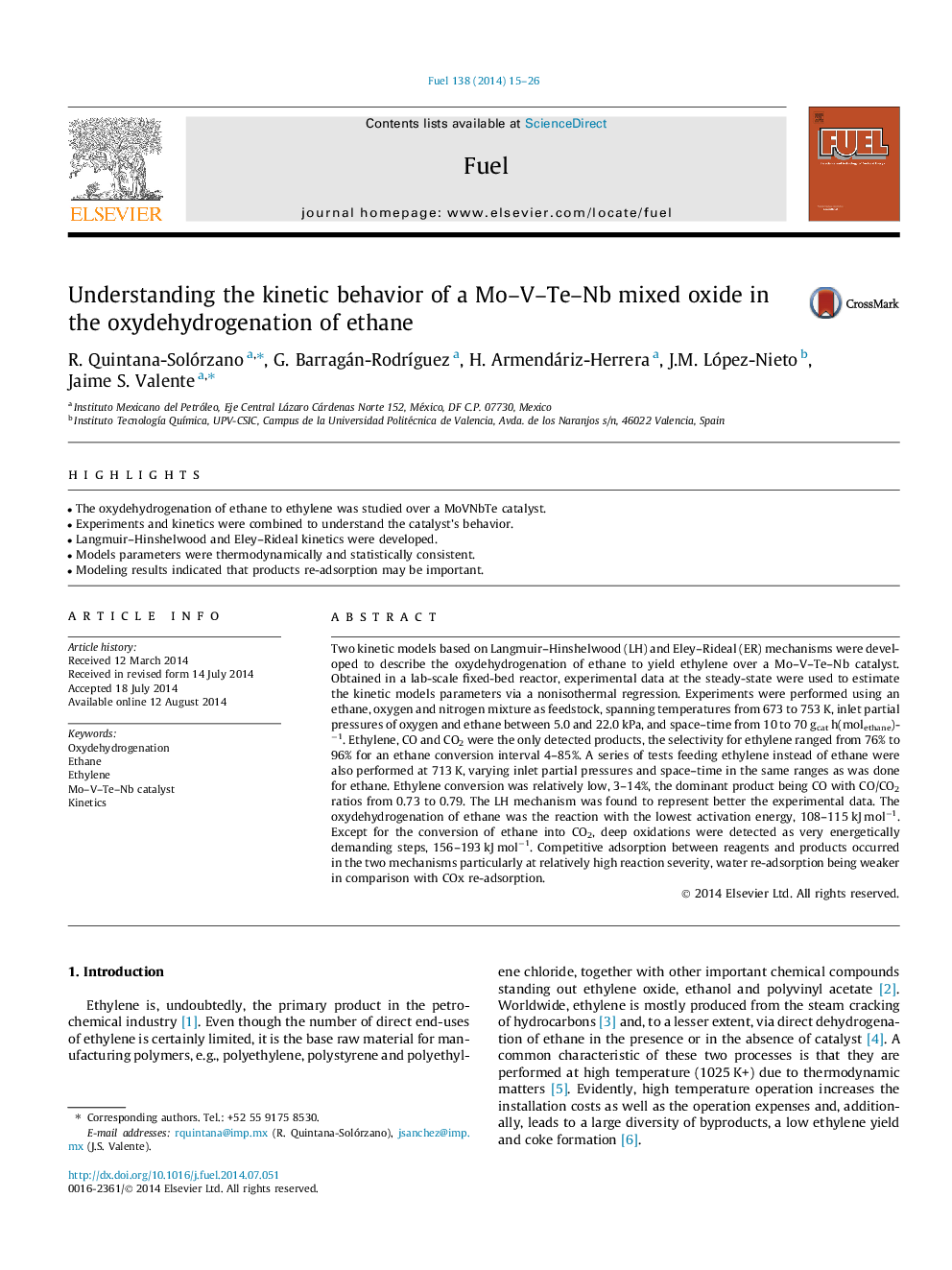| کد مقاله | کد نشریه | سال انتشار | مقاله انگلیسی | نسخه تمام متن |
|---|---|---|---|---|
| 205992 | 461135 | 2014 | 12 صفحه PDF | دانلود رایگان |
• The oxydehydrogenation of ethane to ethylene was studied over a MoVNbTe catalyst.
• Experiments and kinetics were combined to understand the catalyst’s behavior.
• Langmuir–Hinshelwood and Eley–Rideal kinetics were developed.
• Models parameters were thermodynamically and statistically consistent.
• Modeling results indicated that products re-adsorption may be important.
Two kinetic models based on Langmuir–Hinshelwood (LH) and Eley–Rideal (ER) mechanisms were developed to describe the oxydehydrogenation of ethane to yield ethylene over a Mo–V–Te–Nb catalyst. Obtained in a lab-scale fixed-bed reactor, experimental data at the steady-state were used to estimate the kinetic models parameters via a nonisothermal regression. Experiments were performed using an ethane, oxygen and nitrogen mixture as feedstock, spanning temperatures from 673 to 753 K, inlet partial pressures of oxygen and ethane between 5.0 and 22.0 kPa, and space–time from 10 to 70 gcat h(molethane)−1. Ethylene, CO and CO2 were the only detected products, the selectivity for ethylene ranged from 76% to 96% for an ethane conversion interval 4–85%. A series of tests feeding ethylene instead of ethane were also performed at 713 K, varying inlet partial pressures and space–time in the same ranges as was done for ethane. Ethylene conversion was relatively low, 3–14%, the dominant product being CO with CO/CO2 ratios from 0.73 to 0.79. The LH mechanism was found to represent better the experimental data. The oxydehydrogenation of ethane was the reaction with the lowest activation energy, 108–115 kJ mol−1. Except for the conversion of ethane into CO2, deep oxidations were detected as very energetically demanding steps, 156–193 kJ mol−1. Competitive adsorption between reagents and products occurred in the two mechanisms particularly at relatively high reaction severity, water re-adsorption being weaker in comparison with COx re-adsorption.
Journal: Fuel - Volume 138, 15 December 2014, Pages 15–26
